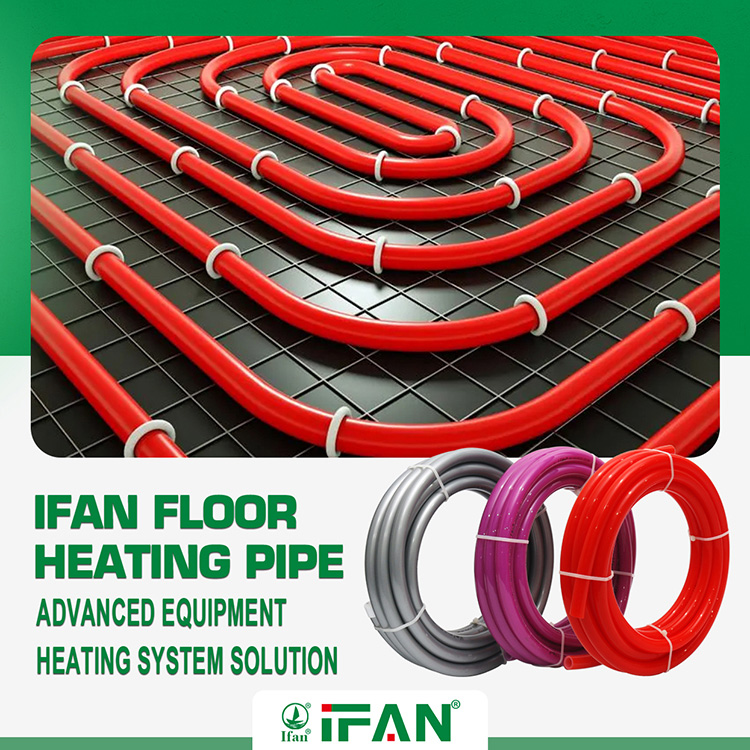What PEX Pipe Can Be Buried?
Assessing Underground Installation Options for Crosslinked Polyethylene Plumbing
While mostly used inside buildings, PEX’s durability leads to questions about whether it can get directly buried underground like traditional water service piping. This article examines which PEX pipes are suitable for subsurface installations, codes, and best practice recommendations.IFAN factory with 30+ years of manufacturing experience supports color/size customization support free samples. Welcome to consult for catalog and free samples. This is our Facebook Website: www.facebook.com.

PEX Tubing Types and Ratings
Several varieties of PEX tubing exist, each with different properties:
- Standard PEX – Available in both SDR-9 and SDR-11 dimension ratios to balance pressure ratings and wall thickness.
- PEX-a – Manufactured using the Engel peroxide method to produce a highly cross-linked and temperature/chemical resistant PEX.
- PEX-b – Uses the less rigorous silane method, yielding a more flexible but lower-rated PEX.
- PEX-c – The electron beam irradiation process generates a tightly crosslinked but more brittle PEX.
- Barrier PEX – Multi-layer PEX with an oxygen barrier layer for hydronic radiant heating systems.
The manufacturing method significantly affects suitability for direct burial.
Code Requirements for Buried PEX Tubing
Plumbing codes permit only certain PEX products for subsurface applications:
- IRC and UPC limit buried PEX to SDR-9 tubing as a minimum.
- PEX-a formulation is preferred for burial due to its higher durability and temperature rating.
- PEX-b is not approved for direct underground installation due to a lower pressure rating.
- Barrier PEX is prohibited for burial since moisture compromises the oxygen barrier over time.
Codes also mandate minimum burial depths from 18 to 24 inches depending on local frost lines and risks.
Performance Factors for Underground PEX Lines
Key considerations for utilizing PEX lines underground:
- Pressure rating – Requires sufficient safety margin below expected dynamic water pressures.
- Trenching impacts – Abrasive rocks and machinery risk gouging thin PEX walls.
- Soil composition – Rocky, acidic, alkaline, and contaminated soils degrade plastics.
- Water table level – PEX must remain fully submerged at all times.
- Thermal dynamics – Freezing and thawing cycles stress pipe materials over time.
Proper PEX formulation selection and installation guards against these external risks.
Outdoor Direct Burial Installation Best Practices
To realize maximum service life from buried PEX:
- Utilize only SDR-9 PEX-a formulation or better tubing.
- Install deeper than the frost line using trenching not surface plowing.
- Clear sharp rocks and debris from trench bottoms before laying pipe.
- Embed piping in sand padding then backfill with screened soil.
- Avoid exposure to petrochemicals or contaminated sites.
- Inspect periodically for indirect damage from digging, tree roots, etc.
Following stringent practices enables durably installation of PEX for underground supply plumbing applications.
Limitations of Buried PEX
While suitable for some subsurface applications, PEX does have burial limitations:
- Not approved for sewer drain-waste-vent piping due to chemical vulnerability.
- Unsuitable for industrial waste lines or exposure to organic solvents.
- Not rated for very high-pressure transmission piping over 160 PSI.
- Requires greater care handling compared to rugged galvanized or black steel pipe.
Weighing the competing underground plumbing demands determines if PEX provides the optimal buried pipe solution.
The Future of Buried PEX Systems
Ongoing advances may expand future direct burial PEX capabilities:
- New PEX formulations with improved chemical and temperature resistance
- Multi-layer PEX incorporating tough reinforced sheathing
- Larger diameter PEX offerings comparable to traditional mainline materials
- Improved PEX-specific compression fittings for underground connections
- Robotics assisting PEX installations deep underground through rocky soils
With continued innovation, PEX shows promise for broader adoption displacing legacy buried plumbing materials.
IFAN
IFAN factory started in 1993. And IFAN has a workshop of 120000 square meters with 610 staff. IFAN can design and produce all plumbing pipe and fitting including PPR, PVC, CPVC PPSU HDPE PEXA PEXB PERT pipe and fitting, brass fitting, brass ball valve, heating system, gas system, sanitary faucets, and hose, In the past 30 years, IFAN has never forgotten his mission-To protect health and safety. The IFAN factory uses the best materials to produce high-quality pipe and fittings with an automatic production line and high-tech quality control machines.

